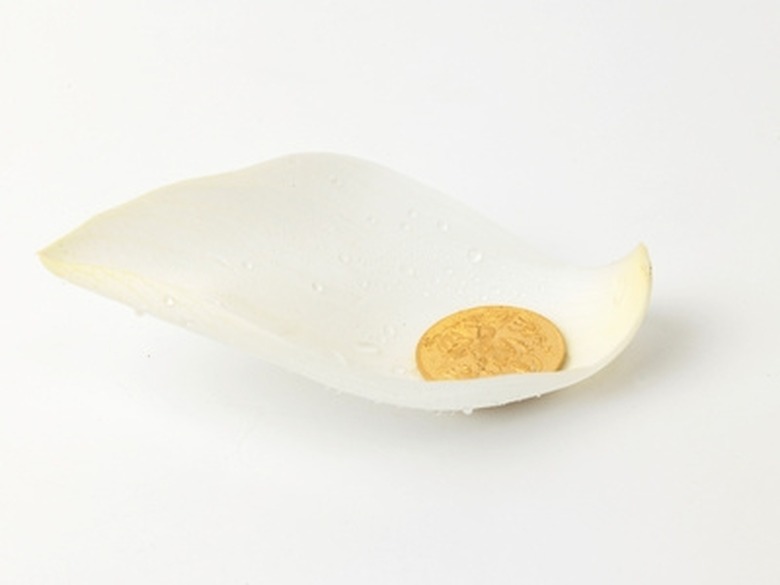How To Test Precious Metals
It doesn't take a magician's trick to discover if your jewelry is real or costume. In fact, a few common chemistry projects can do the trick. Gold, silver and platinum are all precious metals and elements on the periodic table. Naturally, the same procedures that scientists use for testing metallic elements do apply to precious metals. Try these simple experiments to test the authenticity of your jewelry. Remember to test your jewelry in an area that is not visible when worn.
Step 1
Take a close look at the piece, with magnifiers if needed. Look for a hallmark. Older pieces have a letter stamp that reveal the date. There are also marks that signify carat and purity. The U.S. does not have a mandatory hallmarking system, however many other nations do. Look for marking on your jewelry as the first step in determining authenticity. Just remember that the absence of one doesn't mean the piece is fake.
Step 2
Test for magnetism. If the metal adheres to the magnet, it is definitely not a precious metal. Silver, gold and platinum don't have magnetic properties. Proceed to the next test.
Step 3
Bend your metal piece. Precious metals are malleable and very soft. You should be able to bend thin pieces easily. Begin this test by filling a small section of your precious metal with the steel file. Doing this ensures that you get past the plating and to the metal the piece is made of. When you get to the metal under the plating, it should be very easy to file. Other metals like steel will make filing very difficult. If this happens, then your piece is definitely not a precious metal.
Step 4
Use the acid test if you are still unsure of your precious metal. In the notch you filed for step 3, place a drop of nitric acid. Sterling silver will turn the acid a creamy white, while coin silver will produce a dark almost black tone. The finer the silver, the darker the acid will be. Green signifies silver plating. More than 10 carats of gold will not react with the acid, while gold plate on silver creates a pink creamy color. For platinum, you must test a known piece of the metal against your piece and compare the results. The color scheme will signify the amount of gold or silver, plating or steel that is mixed in.
Step 5
Scrape both your testing needle and your precious metal against a testing stone, in separate streaks. Apply a small amount of acid to each streak and compare the result. Testing needles not only come in each metal, but also in the different grades of fineness. This comparison test is a great way to find out if your precious metal is real and to determine the fineness.
Things Needed
- Medium sized magnet
- Magnifying glass
- Steel file
- Fine nail file
- Copper scrubber
- Nitric acid
- Dropper
- Precious metal testing needles
- Precious metal testing stone
Cite This Article
MLA
Davis, Jonita. "How To Test Precious Metals" sciencing.com, https://www.sciencing.com/test-precious-metals-4480724/. 24 April 2017.
APA
Davis, Jonita. (2017, April 24). How To Test Precious Metals. sciencing.com. Retrieved from https://www.sciencing.com/test-precious-metals-4480724/
Chicago
Davis, Jonita. How To Test Precious Metals last modified March 24, 2022. https://www.sciencing.com/test-precious-metals-4480724/
